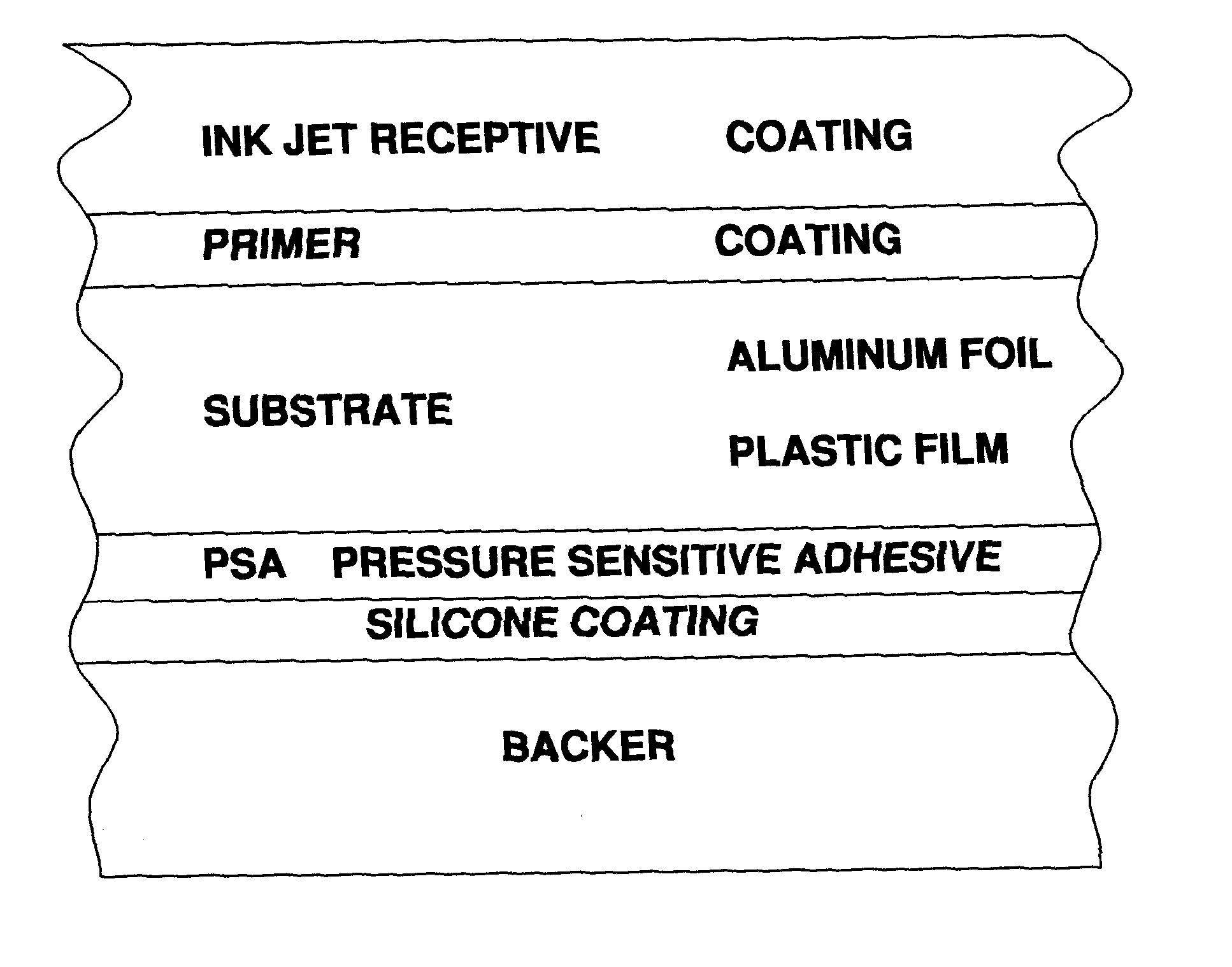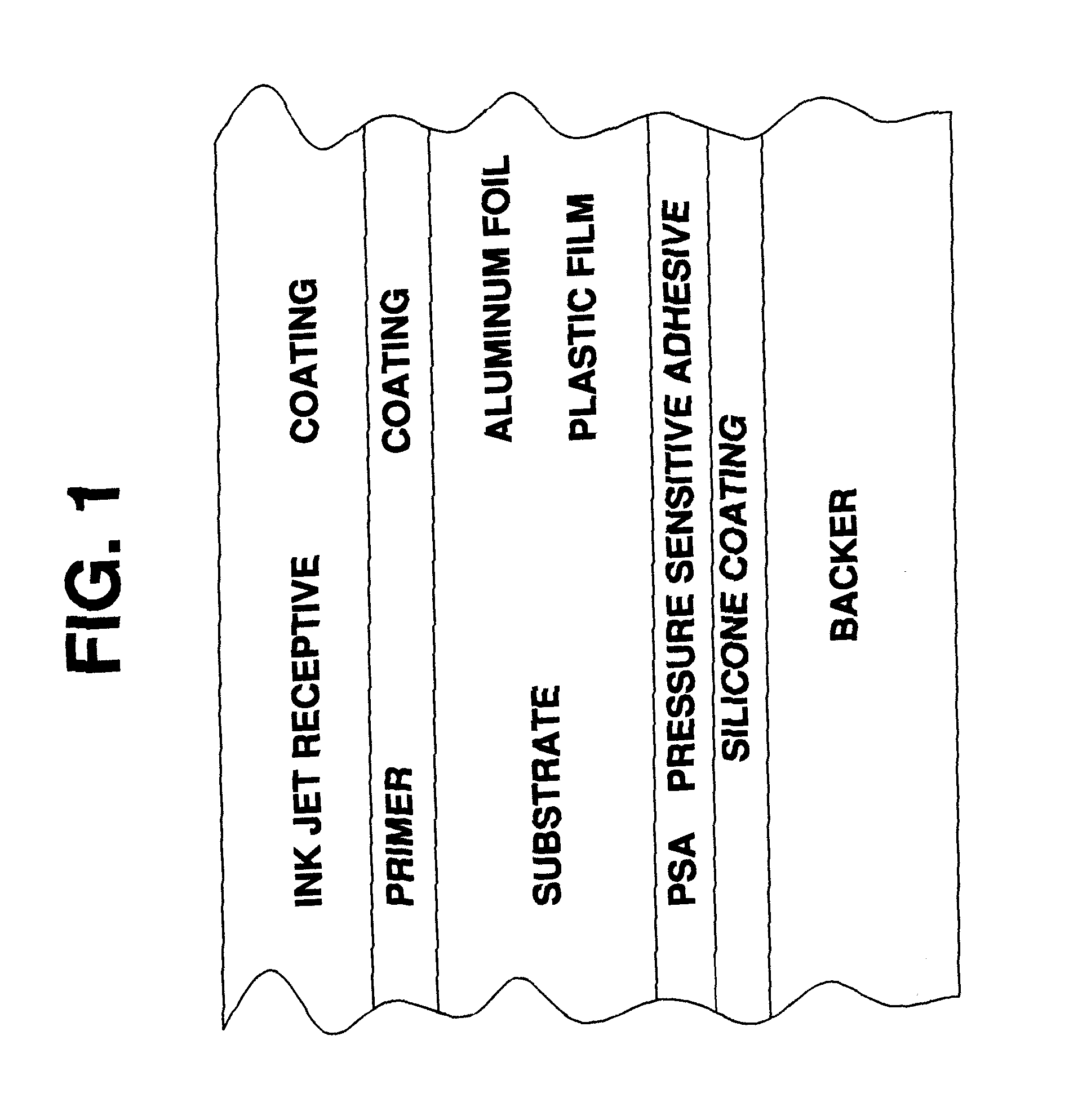Pressure sensitive ink jet media for digital printing
a pressure-sensitive, ink-jet technology, applied in printing, polyurea/polyurethane coatings, medical preparations, etc., can solve the problems of easy smear, low color saturation, feathers of printed pages, etc., to achieve excellent physical properties, maximize absorption, and easy application
- Summary
- Abstract
- Description
- Claims
- Application Information
AI Technical Summary
Benefits of technology
Problems solved by technology
Method used
Image
Examples
example 1
The following components were mixed at room temperature to form the ink jet receptive composition. 1 gram of slurry or aqueous dispersed silica gel, average size at 0.3 micron with a positive zeta potential, (commercially available from Grace Division), was added to 6 grams of OF-280, a cationic co-polymer, dimethyl-diallyl-ammonium chloride / acrylic acid with 80 / 20 ratio and 35% activity molecular weight 250-400K, (commercially available from Calgon Company), under agitation. 32 grams of IJ-2, positively charged polyurethane (commercially available from Esprit Company) were then added and well mixed. 35 grams of tap water were added. 8 grams of 10% aqueous solution of Daxad 11, Sodium napthalenesulfonate-formaldehyde dispersants (commercially available from Hampshire Corporation) were added afterwards.
Two grams of Lucidene 901 polyethylene acrylic acid (commercially available from Morton Corporation) were then added to the mixture. 2.2 grams of Carboset GA-33, acrylic dispersion hav...
PUM
| Property | Measurement | Unit |
|---|---|---|
| wt % | aaaaa | aaaaa |
| particle size | aaaaa | aaaaa |
| wt % | aaaaa | aaaaa |
Abstract
Description
Claims
Application Information
 Login to View More
Login to View More - R&D
- Intellectual Property
- Life Sciences
- Materials
- Tech Scout
- Unparalleled Data Quality
- Higher Quality Content
- 60% Fewer Hallucinations
Browse by: Latest US Patents, China's latest patents, Technical Efficacy Thesaurus, Application Domain, Technology Topic, Popular Technical Reports.
© 2025 PatSnap. All rights reserved.Legal|Privacy policy|Modern Slavery Act Transparency Statement|Sitemap|About US| Contact US: help@patsnap.com


